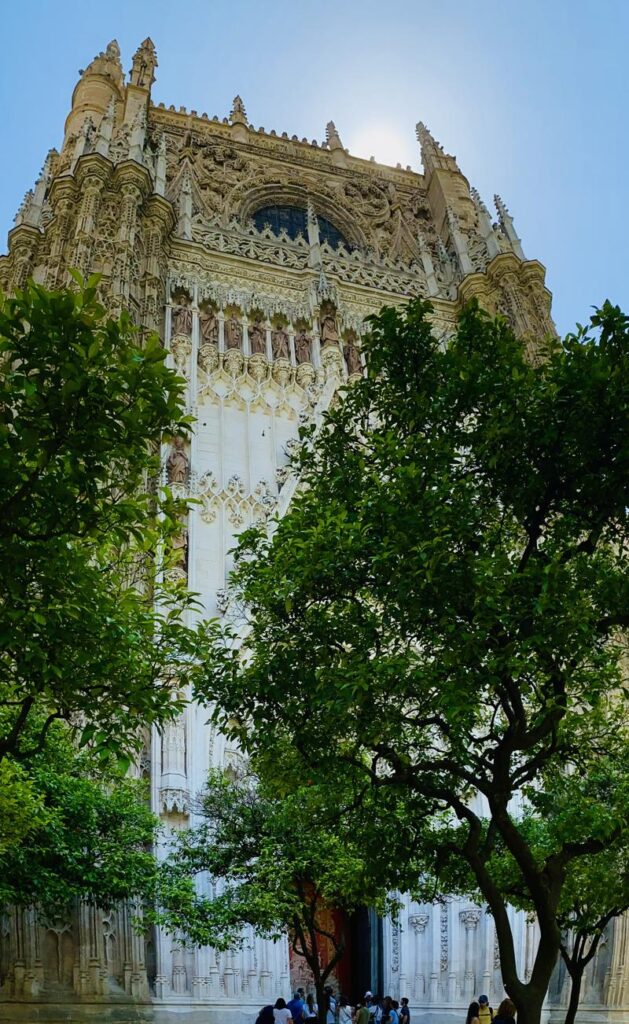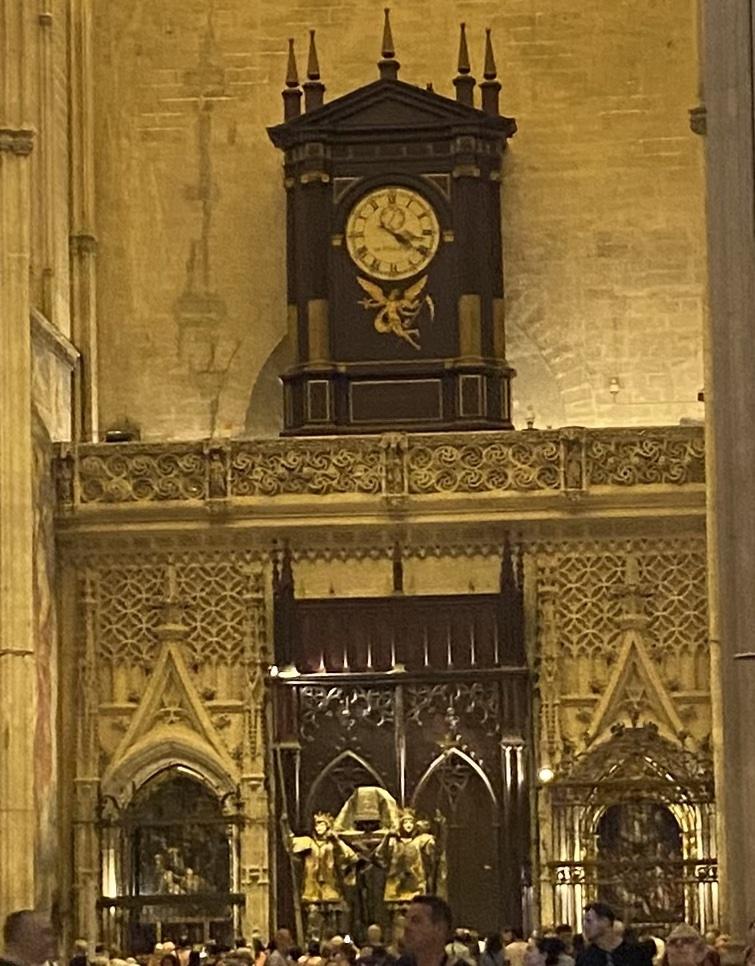Seville Cathedral
Written By: Gail Clifford | Published By: Weekend Notes | September 09, 2024
A Journey Through History, Art, and Royalty

Seville Cathedral
Seville Cathedral, officially known as The Holy, Metropolitan, and Patriarchal Cathedral Church of Saint Mary of the See and the Assumption of Seville (Catedral de Santa María de la Sede), is a monumental masterpiece of Gothic architecture. As the largest Gothic cathedral in the world, it captivates visitors with its breathtaking scale, intricate designs, and rich historical significance. A UNESCO World Heritage site, this awe-inspiring structure seamlessly blends art, spirituality, and history within its towering walls.
What sets Seville Cathedral apart from other religious landmarks is the deep connection it holds to both Spain’s royal legacy and the Age of Exploration. Perhaps the most famous figure associated with the cathedral is Christopher Columbus, whose remains are enshrined within a stunning tomb carried by four larger-than-life bearers, representing the kingdoms of Castile, León, Aragon, and Navarre.
Beyond its monumental size, Seville Cathedral holds countless stories and secrets waiting to be discovered, from its origin as a former mosque to its extensive collection of art and altarpieces.

Seville Cathedral La Giralda
A Cathedral Built on the Foundations of a Mosque
The origins of Seville Cathedral are as fascinating as its towering spires. Construction began in 1404 on the site of the former Almohad Mosque, which had been the heart of Seville during the Islamic rule of Spain. In fact, one of the most striking features of the cathedral, La Giralda, was originally the minaret of the mosque. The tower’s ingenious design, featuring ramps instead of stairs, allowed a sultan to ride his horse to the top. Today, La Giralda serves as the cathedral’s bell tower, offering breathtaking views of Seville after an invigorating climb.
Seville Cathedral’s construction took over a century to complete, finally being consecrated in 1507. Its builders famously declared they wanted to create something “so grand that those who see it finished will take us for madmen.” Standing within the vast expanse of the cathedral, it’s easy to see why.

Seville Cathedral Tomb of Christopher Columbus
The Final Resting Place of Christopher Columbus
Perhaps the most famous name associated with Seville Cathedral is Christopher Columbus. His remains were interred here, carried by four larger-than-life bearers representing the kingdoms of Castile, León, Aragon, and Navarre. A pomegranate, symbolizing unity, rests at the foot of one of these figures. Although Columbus’s body traveled extensively after his death—shifting between Spain, Santo Domingo, and Cuba—it now rests in Seville, a fitting end for the man who changed the course of history.
But Columbus is not the only prominent figure buried within the cathedral’s walls. Seville Cathedral is also home to the tombs of several Castilian kings, including Ferdinand III, who captured Seville from the Moors, and his son Alfonso X, a scholar-king known for promoting the arts and sciences.
Gail Clifford
Latest posts by Gail Clifford (see all)
- We Were Warned: An Anthology of Short Stories - October 23, 2024
- Exploring Dublin’s Royal Canal: A Journey Through Time and Nature - September 30, 2024
- The 8 Best Dr. Phillips Restaurants | Dr. Phillips, West Orlando, Florida - September 19, 2024
- Discover Cascais, Portugal - September 18, 2024
- The Ultimate Expat Guide How to Buy Property in Costa Rica, Ireland and the USA With Less Stress - September 17, 2024

0 Comments